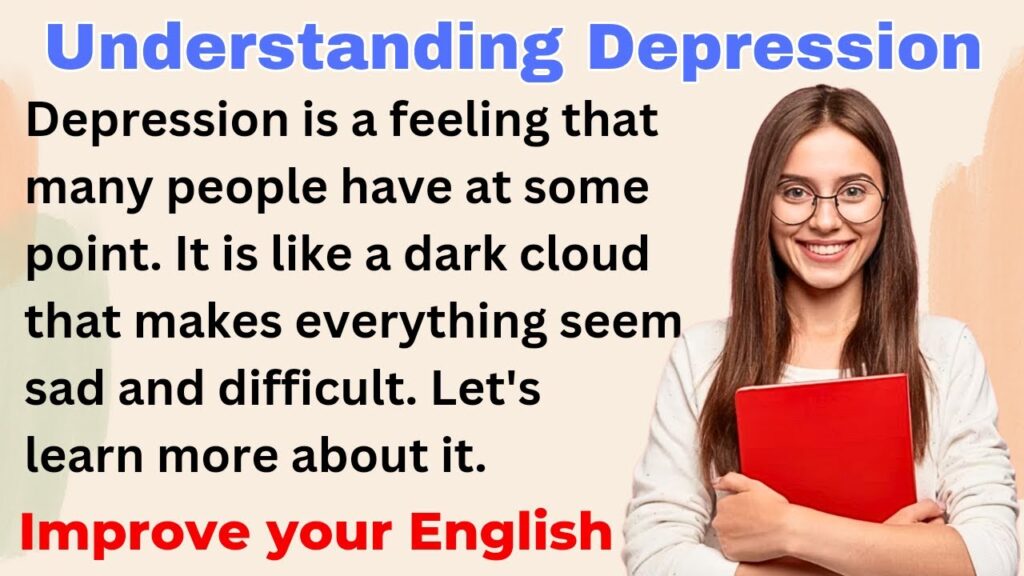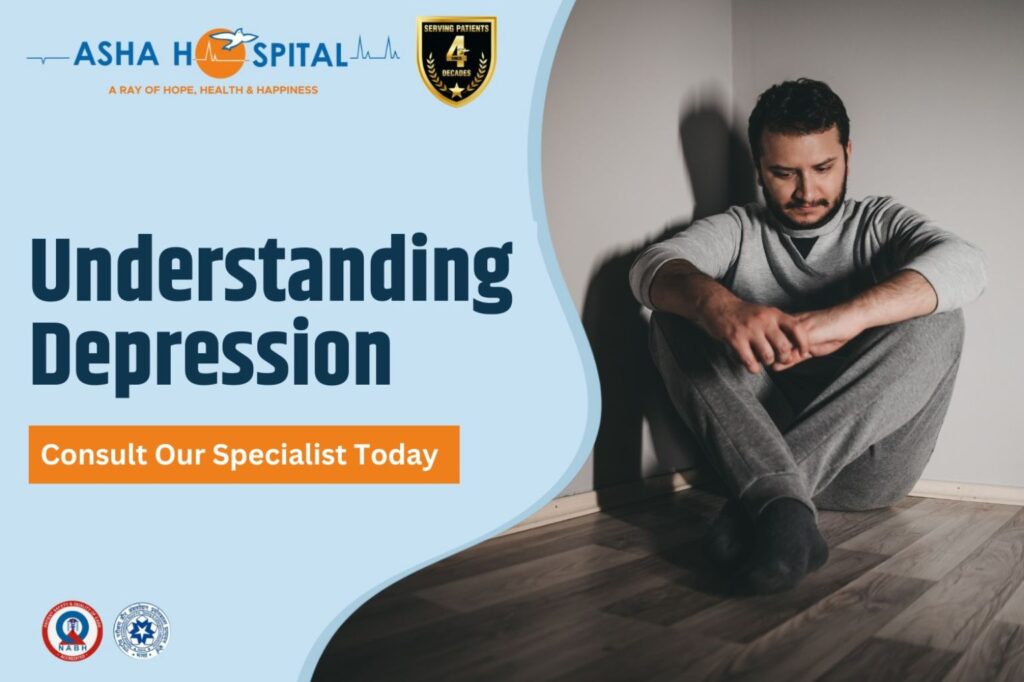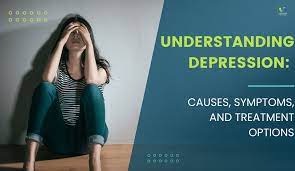Depression, more than just fleeting sadness, is a serious and prevalent mood disorder that significantly impacts how you feel, think, and behave. It’s a complex condition rooted in a combination of genetic, biological, environmental, and psychological factors. This comprehensive guide delves into the depths of depression, exploring its various facets, from symptoms and causes to different types, diagnosis, treatment options, and coping strategies.
What is Depression? Beyond Sadness
Depression is characterized by persistent feelings of sadness, emptiness, or hopelessness. It goes beyond the temporary blues experienced after a setback or loss. It’s a pervasive condition that interferes with daily life, affecting everything from work and relationships to sleep and appetite. Crucially, depression isn’t a sign of weakness or a character flaw; it’s a legitimate illness that requires professional attention.
The Diagnostic and Statistical Manual of Mental Disorders, 5th Edition (DSM-5), defines Major Depressive Disorder (MDD) based on specific criteria, including the presence of at least five of the following symptoms during the same two-week period, with at least one symptom being either depressed mood or loss of interest or pleasure:
- Depressed Mood: A persistent feeling of sadness, emptiness, or hopelessness most of the day, nearly every day. This can be expressed as irritability, especially in children and adolescents.
- Loss of Interest or Pleasure (Anhedonia): A significant decrease in interest or pleasure in activities that were once enjoyable. This can manifest as a lack of motivation or feeling emotionally numb.
- Significant Weight Loss or Gain (or Decrease or Increase in Appetite): A noticeable change in weight (5% or more in a month) when not dieting, or a significant change in appetite.
- Insomnia or Hypersomnia: Difficulty sleeping (insomnia) or sleeping excessively (hypersomnia) nearly every day.
- Psychomotor Agitation or Retardation: A noticeable restlessness and inability to stay still (agitation) or a slowing down of movements and speech (retardation) observable by others.
- Fatigue or Loss of Energy: Feeling tired or lacking energy nearly every day, even after adequate sleep.
- Feelings of Worthlessness or Excessive Guilt: Feeling worthless, hopeless, or excessively guilty, even about minor things.
- Difficulty Concentrating or Making Decisions: Trouble focusing, thinking clearly, or making decisions.
- Thoughts of Death or Suicide: Recurring thoughts of death, suicidal ideation (thinking about suicide), a suicide attempt, or a specific plan for committing suicide.
These symptoms must cause clinically significant distress or impairment in social, occupational, or other important areas of functioning. They must also not be attributable to the physiological effects of a substance or another medical condition.

The Multifaceted Causes of Depression
Depression is not caused by a single factor; instead, it’s a complex interplay of several contributing elements:
- Genetics: A family history of depression significantly increases the risk of developing the disorder. While specific genes responsible for depression haven’t been identified, research suggests that certain genetic variations can predispose individuals to the illness. This doesn’t mean that everyone with a family history of depression will develop it, but it increases their vulnerability.
- Brain Chemistry: Imbalances in neurotransmitters, chemical messengers in the brain, play a crucial role in mood regulation. Serotonin, norepinephrine, and dopamine are particularly implicated in depression. Reduced levels or impaired functioning of these neurotransmitters can contribute to depressive symptoms. Antidepressant medications often work by adjusting the levels of these neurotransmitters in the brain.
- Hormonal Changes: Hormonal fluctuations, particularly in women, can trigger or worsen depression. These fluctuations can occur during pregnancy, postpartum (postpartum depression), menopause, or as a result of thyroid disorders. Hormones like estrogen and progesterone have a significant impact on brain function and mood regulation.
- Stressful Life Events: Traumatic experiences, major life changes (e.g., job loss, divorce, death of a loved one), chronic stress, and abuse (physical, emotional, or sexual) can significantly increase the risk of depression. These events can disrupt the brain’s stress response system and contribute to long-term mood dysregulation.
- Medical Conditions: Certain medical conditions, such as chronic pain, cancer, heart disease, stroke, and autoimmune disorders, can increase the risk of depression. The physical limitations, pain, and emotional distress associated with these illnesses can contribute to feelings of sadness, hopelessness, and isolation. Furthermore, some medications used to treat these conditions can have depressive side effects.
- Personality Traits: Certain personality traits, such as neuroticism (a tendency towards anxiety and negative emotions), low self-esteem, and pessimism, can make individuals more vulnerable to depression. These traits can influence how people perceive and react to stressful events, increasing their susceptibility to developing depressive symptoms.
- Environmental Factors: Social isolation, lack of social support, financial difficulties, and exposure to violence or discrimination can contribute to depression. These factors can create a sense of hopelessness and powerlessness, leading to feelings of sadness and despair.
- Substance Abuse: Substance abuse, including alcohol and drug use, can both trigger and worsen depression. While some individuals may turn to substances to cope with depressive symptoms, substance abuse can actually disrupt brain chemistry and exacerbate the underlying mood disorder.
It’s important to recognize that these factors often interact with each other. For example, someone with a genetic predisposition to depression might only develop the illness after experiencing a significant stressful life event.

Different Faces of Depression: Types of Depressive Disorders
Depression manifests in various forms, each with its own unique characteristics:
- Major Depressive Disorder (MDD): The most common type of depression, characterized by persistent sadness, loss of interest, and other symptoms that significantly interfere with daily life. Episodes can last for weeks, months, or even years.
- Persistent Depressive Disorder (Dysthymia): A chronic form of depression characterized by milder, but long-lasting symptoms (at least two years). While the symptoms may not be as severe as those of MDD, they can still significantly impact a person’s quality of life.
- Seasonal Affective Disorder (SAD): A type of depression that occurs during specific seasons, typically in the fall and winter months when there is less sunlight. Symptoms include fatigue, increased sleep, weight gain, and social withdrawal.
- Postpartum Depression: A type of depression that occurs after childbirth, often characterized by sadness, anxiety, exhaustion, and difficulty bonding with the baby. Hormonal changes, sleep deprivation, and the stress of new parenthood can contribute to postpartum depression.
- Premenstrual Dysphoric Disorder (PMDD): A severe form of premenstrual syndrome (PMS) that includes significant mood swings, irritability, anxiety, and depression in the week or two before menstruation.
- Bipolar Disorder: While technically not a depressive disorder on its own, bipolar disorder involves cycles of both depressive and manic episodes. The depressive episodes are often indistinguishable from MDD.
Understanding the specific type of depression is crucial for effective diagnosis and treatment.

Diagnosis and Assessment
Diagnosing depression typically involves a comprehensive evaluation by a mental health professional, such as a psychiatrist, psychologist, or licensed therapist. The evaluation may include:
- Medical History: Reviewing the patient’s past and present medical conditions, medications, and family history.
- Mental Status Exam: Assessing the patient’s appearance, mood, behavior, thought processes, and cognitive functioning.
- Symptom Checklist: Using standardized questionnaires, such as the Beck Depression Inventory (BDI) or the Hamilton Depression Rating Scale (HDRS), to assess the severity and frequency of depressive symptoms.
- Diagnostic Criteria: Determining if the patient meets the criteria for a specific depressive disorder as outlined in the DSM-5.
- Physical Examination and Lab Tests: Ruling out any underlying medical conditions that may be contributing to the depression.
The diagnosis process aims to differentiate depression from other mental health conditions, such as anxiety disorders or bipolar disorder, and to identify any co-occurring medical conditions.

Treatment Options: Finding the Path to Recovery
Treatment for depression typically involves a combination of psychotherapy, medication, and lifestyle changes:
- Psychotherapy (Talk Therapy): Various forms of psychotherapy can be effective in treating depression. Cognitive Behavioral Therapy (CBT) helps individuals identify and change negative thought patterns and behaviors. Interpersonal Therapy (IPT) focuses on improving interpersonal relationships and social skills. Psychodynamic therapy explores unconscious conflicts and past experiences that may be contributing to depression.
- Antidepressant Medications: Antidepressants work by adjusting the levels of neurotransmitters in the brain. Selective Serotonin Reuptake Inhibitors (SSRIs), Serotonin-Norepinephrine Reuptake Inhibitors (SNRIs), Tricyclic Antidepressants (TCAs), and Monoamine Oxidase Inhibitors (MAOIs) are different classes of antidepressants, each with its own potential benefits and side effects. It’s crucial to work closely with a doctor to find the right medication and dosage.
- Other Medications: In some cases, other medications, such as mood stabilizers or anti-anxiety medications, may be prescribed to treat co-occurring conditions or to augment the effects of antidepressants.
- Brain Stimulation Therapies: In cases of severe depression that haven’t responded to other treatments, brain stimulation therapies may be considered. Electroconvulsive Therapy (ECT) involves passing a brief electrical current through the brain to induce a seizure. Transcranial Magnetic Stimulation (TMS) uses magnetic pulses to stimulate specific areas of the brain.
- Lifestyle Changes: Adopting healthy lifestyle habits can significantly improve mood and reduce depressive symptoms. Regular exercise, a balanced diet, adequate sleep, stress management techniques (e.g., meditation, yoga), and social support can all contribute to recovery.
The most effective treatment plan is tailored to the individual’s specific needs and preferences. It’s essential to be patient and persistent with treatment, as it may take time to find the right combination of therapies.

Coping Strategies: Taking Charge of Your Mental Health
In addition to professional treatment, there are several coping strategies that individuals can use to manage depressive symptoms:
- Reach Out for Support: Talk to trusted friends, family members, or support groups about your feelings. Sharing your experiences can help you feel less alone and provide valuable emotional support.
- Engage in Enjoyable Activities: Even when you don’t feel like it, try to engage in activities that you used to enjoy. This could include reading, listening to music, spending time in nature, or pursuing a hobby.
- Practice Self-Care: Prioritize activities that promote your physical and emotional well-being, such as getting enough sleep, eating healthy foods, taking relaxing baths, and practicing mindfulness.
- Set Realistic Goals: Break down large tasks into smaller, more manageable steps. Avoid setting unrealistic expectations for yourself, as this can lead to feelings of discouragement.
- Challenge Negative Thoughts: Learn to identify and challenge negative thought patterns. Question the validity of these thoughts and replace them with more positive and realistic ones.
- Practice Mindfulness: Focus on the present moment and observe your thoughts and feelings without judgment. Mindfulness techniques, such as meditation and deep breathing exercises, can help reduce stress and improve emotional regulation.
- Avoid Alcohol and Drugs: Alcohol and drugs can worsen depressive symptoms and interfere with treatment.
- Stay Active: Regular physical activity can boost mood and reduce stress. Even a short walk can make a difference.
- Get Enough Sunlight: Exposure to sunlight can help regulate your body’s natural sleep-wake cycle and improve mood. If you live in an area with limited sunlight, consider using a light therapy box.
- Be Patient: Recovery from depression takes time. Be patient with yourself and celebrate small victories along the way.
Breaking the Stigma and Seeking Help
Depression is a treatable illness, and recovery is possible. However, stigma surrounding mental health can prevent people from seeking help. It’s crucial to break the stigma by educating ourselves and others about depression, promoting open conversations about mental health, and supporting individuals who are struggling.
If you are experiencing symptoms of depression, it’s important to seek professional help. Don’t suffer in silence. A mental health professional can provide a proper diagnosis, recommend appropriate treatment options, and offer support and guidance on your journey to recovery. Remember, seeking help is a sign of strength, not weakness.
Resources:
- National Institute of Mental Health (NIMH): www.nimh.nih.gov
- Depression and Bipolar Support Alliance (DBSA): www.dbsalliance.org
- Mental Health America (MHA): www.mhanational.org
- The Trevor Project: www.thetrevorproject.org (for LGBTQ youth)
- Suicide Prevention Lifeline: 988
By understanding the complexities of depression, breaking down the stigma, and seeking appropriate treatment, we can empower individuals to overcome this challenging condition and live fulfilling lives.